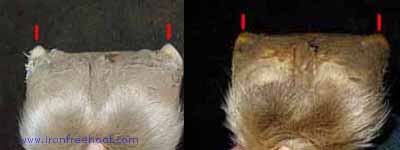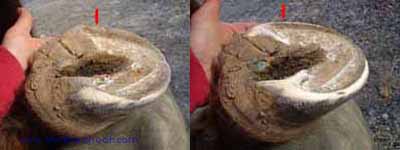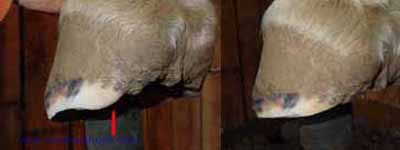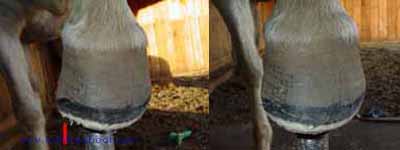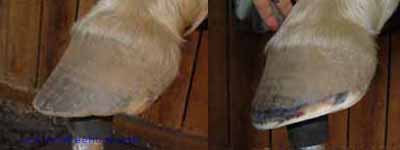|
Natural TrimmingI keep natural trimming simple. The pictures on this page are of the same foot on the natural hoof care page. I thought that taking the pictures on the hoof stand gave a very different perspective. I am hoping that having two pages full of the same trim will help you visualize exactly what I was trying to accomplish and how I did it. Natural trimming methods vary from person to person. This is how I have adapted my trimming over time. Remember, I trim horses in a more wet environment. We do have dry spells, but they do not compare to the hooves of the desert. I have also worked with students and colleagues that trim in extremely wet areas. It often takes experimenting to find what works best for you and your horse. My journey has been like a swinging pendulum. I have vacillated between over-trimming and under-trimming. It doesn't help that each horse has its own set of needs and issues too.
I am a visual learner and get a lot out of studying pictures. That is why I put together these pictures of trimming. This foot was long and over grown. I shortened the walls with a mustang roll. Notice the frayed edges of the hoof wall? As I rasp through the outer hoof wall and get closer to the inner hoof wall, there is more moisture in this layer. As I am trimming, I use these sticky chads act as a clue that I am close to my stopping point. I also shorten the heels by putting a mustang roll all the way around the back of the hoof to the bars. Most of this is accomplished while the hoof is on the stand, but a final smoothing is done from the bottom. Sometimes I haven't shortened the walls enough, so I bring them down a little more from the bottom. I used to take the walls down even with the sole, but changed that a few years ago. This added wall height seems to make the horses more comfortable. I know this is a very brief description of my version of trimming. This hoof had gotten too large. Going back to the box analogy, I was trimmed the hoof to make the package the appropriate size for the contents. Khala has such good hooves. I have always felt he had good lamilar connection, lots of digital cushion and thick lateral cartilages. It is easy to trim him. His good feet have taught me a lot. Return from Natural Trimming to Natural Hoof Care for Horses
|





